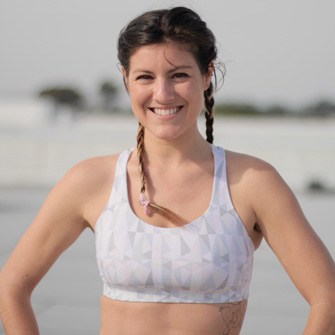If you follow me on Instagram, you know that nutritional yeast is a staple in our kitchen. I use it almost daily and there are so many different ways to incorporate it into your diet. If you’ve been noticing this in all of my insta story recipes, and wondering what exactly it is and some ways to use it, read on to learn all about this vitamin-packed protein.
What Is Nutritional Yeast?
Nutritional yeast is a deactivated yeast that is sold in powdered or flake forms. It is produced by culturing a yeast, usually a strain of Saccharomyces cerevisiae, in a growth medium for several days. When the yeast is ready, it is deactivated by heat before it’s then washed, dried, and packaged. Regular yeast, on the other hand, is active – as soon as you add some water and sugar – it’s activated, and helps baked goods rise. Since nutritional yeast is inactive, it doesn’t have any leavening power (so it won’t cause things to rise!).
Where to Find It?
You can usually find it in the bulk bins at most grocery stores
OR near the baking section in such stores as Trader Joe’s or
OR sometimes it’s hidden in the vitamin/supplement section of a store.
You can also always order it online.
Taste + Nutritional Qualities
Nutritional yeast (also referred to a Nooch) has long been a favorite by vegans for years. Due to it’s nutty, cheesy-like flavor, it’s often used as a dairy free alternative in recipes. I love it for savory dishes and will also add it to sauces to make them creamy. What makes this superfood truly special is how much nutrition is packed into these golden flakes. Two tablespoons of nutritional yeast is a whopping 5 grams of protein. It’s also an excellent source of zinc, folic acid, many B vitamins. Specifically, nutritional yeast is rich in vitamin B12, which is of particular importance to vegans. I recently dove more in depth into vitamin B12 in a recent Instagram post (including which B12 supplement we take), but the importance of vitamin B12 shouldn’t be understated.
Vitamin B12!
As little as one tablespoon of nutritional yeast will satisfy the recommendations of 2.4 micrograms a day. This water soluble vitamin is essential for growth, circulation, and healthy brain and nervous system function. The only reliable food sources of vitamin B12 (that are currently backed by research) are from animal products like meat and dairy and nutritional yeast. This is because Vitamin B12 comes from soil microbes that animals ingest. There are many vegan-friendly foods fortified with B12, such as non-dairy milks and cereals. Other foods such as tempeh, miso, and algae (spirulina and nori) are labeled to have B12, however they shouldn’t be solely relied upon for adequate intake. Because of this, it is recommended that all vegans take a B12 supplement. Vitamin B12 is particularly important for pregnant and lactating women because it passes to the fetus through the placenta and is present in breast milk. In my 30 Day Vegan Transformation Program, I dive even deeper into this topic (and also every other essential nutrients for vegans!), and include more information about how huge of a role this vitamin plays, and how detrimental a lack of this vitamin is. My next round, starting Jan 1, will help you kick start your healthiest year!
How To Eat It
The beauty of nutritional yeast is that there’s absolutely no right or wrong way to use it. Cater it to your food preferences and don’t be afraid to have fun with it! I personally love it on top of some avocado toast. Lately, my go to has been avocado and black bean toast sprinkled with nutritional yeast – so good! I also use it regularly in my kale salad. I massage the kale with nutritional yeast, avocado, and apple cider vinegar and the kids love it. It’s perfect to sprinkle on pastas, veggies, and quinoa/rice bowls as well.
In A Sauce
This is a staple ingredient for all of my homemade sauces including my Cashew Cheese sauce and my Savory Sauce recipes.
Cashew Cheese Sauce:
- 1 cups raw soaked cashews
- 1/4 cup water
- 1tbsp apple cider vinegar
- 2 tbsp lemon juice
- 1 tbsp dijon mustard
- 1/4 cup nutritional yeast
- 2 cloves garlic
- salt and pepper
Blend all ingredients in a blender until smooth. Watch the cooking video HERE
In A Recipe
To make my homemade seitan, I use ½ cup of it. If you haven’t discovered seitan yet it will be your new favorite vegan protein source!
Nutritional yeast is also a key ingredient in most Vegan Mac N Cheese recipes. We particularly like this one from One Green Planet especially for the pumpkin season.
Other ways to use it include in soups and stews, or even getting creative with it, like in this vegan cheesy cauliflower recipe.
As A Seasoning
Or try sprinkling it on some popcorn for a simple cheesy vegan popcorn snack. We top our pasta dishes, avocado toast and our salads with it.
Did you try nutritional yeast?
I’m always looking for new ways to use it and want to hear about your experience! Leave me a message in the comments below or tag me on instagram (@FITMOMMA4THREE) to share your experience!










